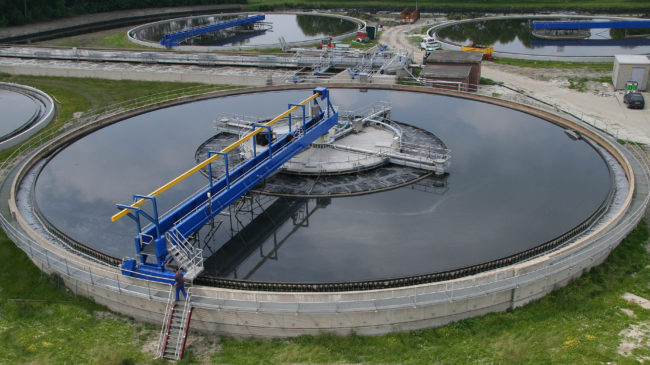Critics of private companies participating in municipal water management recently celebrated the 10-year anniversary of the United Nations General Assembly, including a commitment to “fight(ing) water privatization” in their official declaration that “water and sanitation are fundamental human rights.”
While private sector participation in public sector infrastructure should always be carefully monitored and managed to protect taxpayers’ interests, demanding that private actors exit the areas of public water and sanitation management is not only short-sighted but also makes it more difficult for governments to provide affordable water and sanitation services.
Critics of water privatization point out that shortsightedness in the 20th century led most government leaders to see clean water as a “limitless resource available to all,” but this mentality has necessitated the need for substantial innovation in the municipal water space. Replacing aging infrastructure, complying with extensive regulatory oversight, expanding capacity for new developments, detecting and fixing breaks and leaks, diverting stormwater, and extracting valuable resources from wastewater are just a few of the adjustments municipalities have made.
When locales cannot engage private entities to help manage these changes, municipalities are left retaining the risks of doing so alone.
Governments are usually ill-equipped to manage all the changes and risks that come up while operating and maintaining water-related systems by themselves. Years of deferred maintenance in water infrastructure means that needed improvements will be costly, especially when you consider the federal and state-level environmental mandates that systems need to comply with. According to a 2012 report from the American Water Works Association, over $1 trillion is needed over the next 25 years for merely expanding infrastructure for growing populations and replacing components past their useful life.
The private sector has offered innovative solutions to better manage the risks of operating public water systems and will continue to provide them. Profit motives in the municipal water sector are not a moral wrong that needs to be corrected. Rather, the private sector can often provide a lifeline for governments trying to walk the tightrope of balancing affordability and reliability.
Public Works Financing’s June 2017 issue identified many cities, both large and small, that have benefitted from contracting with the private sector for water infrastructure projects. The publication found Tampa saved an estimated $85 million on a 15-year water public-private partnership, as well as saving 50 percent compared to its in-house costs over a 30-year deal on their desalination plant. Seattle saved a combined $120 million on separate projects entered into 1998 and 2001, with savings of 47 percent and 31 percent over in-house services, respectively. Bessemer, Alabama, saved a reported $100 million on the 20-year project it entered into in 1997. And Pawtucket, Rhode Island, saved $37 million on its 20-year water project. Nassau County, New York, expects $378 million in savings just from contracting out operations and maintenance for 20 years.
Even when cost savings are not reported, many of the largest cities in the U.S. have chosen to contract out water and wastewater infrastructure operation and maintenance, as well as to rely on privately-operated (and sometimes, owned) treatment plants and other facilities for wastewater, sludge treatment and other complementary services. Atlanta, Baltimore, New Orleans, Philadelphia, Phoenix, and San Diego are a few of the cities that have done so.
While it may be true that water privatization and outsourcing can frequently come with initially increased rates for consumers—as companies step in to address decades of undercharging and deferred maintenance, rate hikes are typically needed to start to repair and improve the water systems, whether they are in public or private hands.
Typically, long-term concessions and leases of water systems to private companies are designed to minimize rate hikes through effective use of capital and maintenance schedules. Counterfactually, a lack of access to private capital and resources is likely to result in even higher rates since resources for agencies limit the extent to which a long-term “lifecycle” approach to infrastructure can be adopted. By transferring the risks of financing, maintenance, operation, and repair to outside entities in long-term contracts that incentivize effective performance, government agencies can sometimes soften the sticker shock of costly improvements over time, keeping infrastructure in consistently good operating condition — as opposed to deferring maintenance and fixing things as they break.
Undoubtedly, supplying every citizen with clean water, regardless of ability to pay, is a noble goal, but denying the private sector participation makes it unrealistic many financially-strapped governments will be able to meet that goal over the long-term. Maintaining the delivery of clean water, the sanitary diversion of wastewater, and the safe diversion of stormwater for citizens in an efficient manner is not simple or without considerable cost.
Declaring water and sanitation “human rights” is easy. Building, funding, maintaining, and operating those water systems are more complicated. Denying municipalities the option of working with private sector leaders in the industry just makes effective water infrastructure management costlier and more difficult, which ultimately hurts customers and taxpayers.

